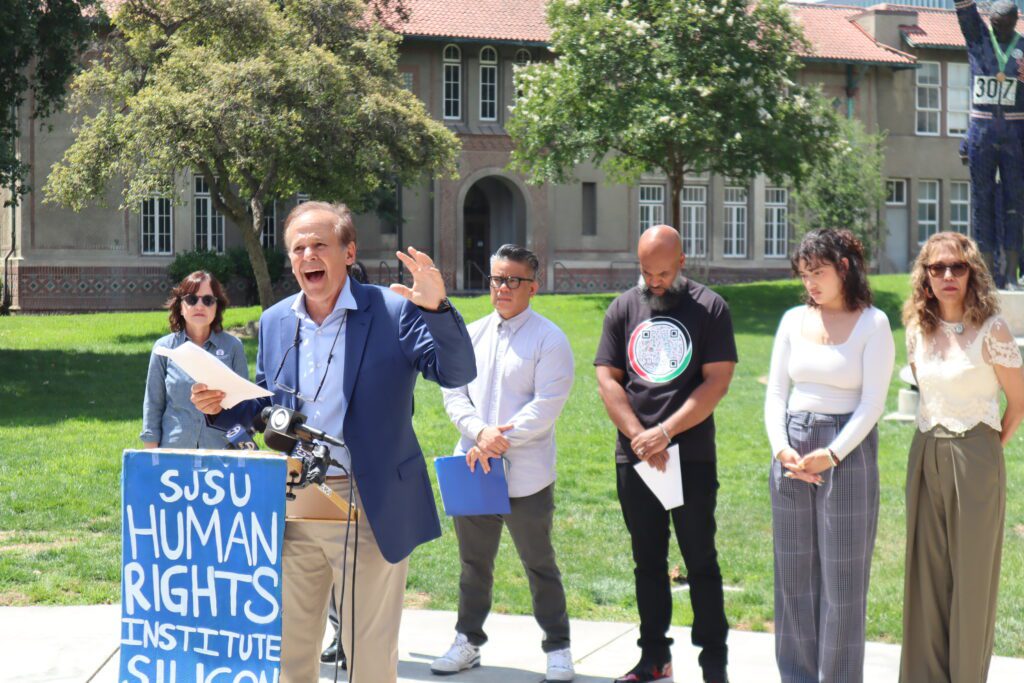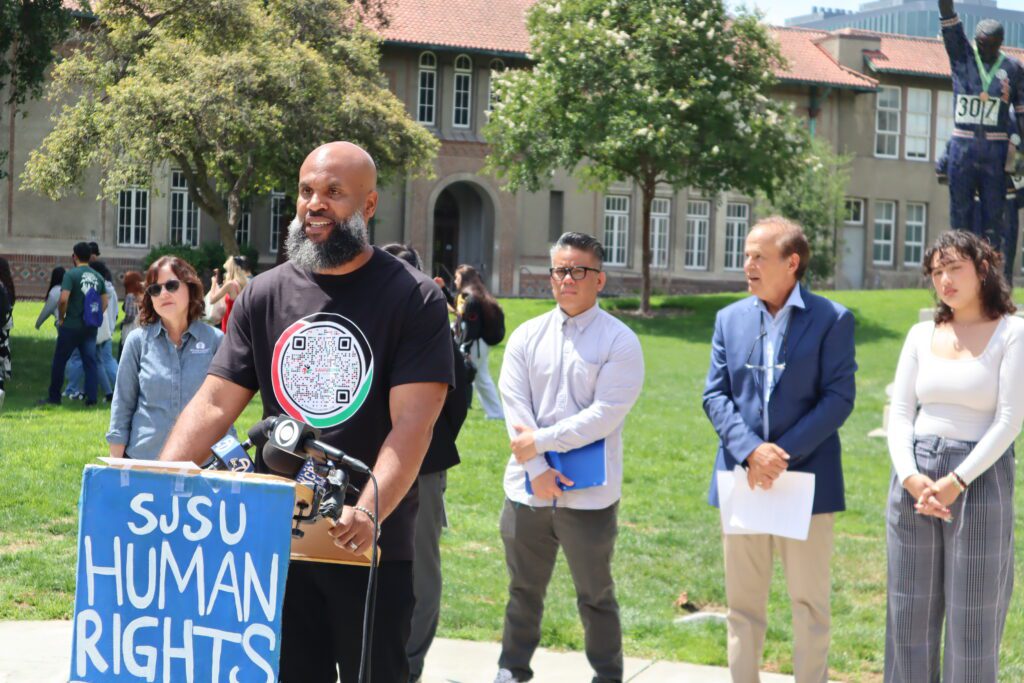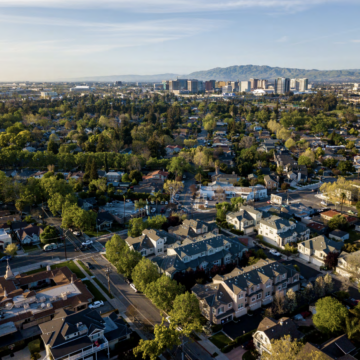An annual report compiling metrics on inequity offers a dismal outlook for people trying to get by in Santa Clara County.
The findings of the 2024 Silicon Valley Pain Index published by San Jose State University researchers came out today. Since producing the study five years ago, inequities throughout the Santa Clara County have only gotten worse, according to the report. Wealth, household income, homelessness, food insecurity and quality of life for Black and Latino residents, as well as women, continue to erode.
“If you would’ve asked me five years ago when we started, we thought we’d see a baseline and me personally, I thought as we educated the populace, my hope was that we would actually start seeing improvements,” Scott Myers-Lipton, SJSU sociology professor emeritus and co-author of the report, told San José Spotlight. “That’s upsetting, that we’re not seeing that.”
The annual report’s goal is to use data and reporting to show structured inequalities and start conversations on how to bridge those gaps.

Myers-Lipton said researchers received more accurate data this year, showing that nine households hold $110 billion in liquid wealth — 12 times more than the bottom 50% of households in the region. That’s double from what the report found last year, which was that the top eight households held about $50 billion in liquid wealth.
The report also found that while the overall number of use of force complaints against the San Jose Police Department dropped from 44 to 36, the department ranked first across all Bay Area police departments in K-9 unit dog bites. Of 167 bites from 2018 to 2022, 115 bites were directed toward Latino or African American people.
Jobs across Santa Clara County also feature steep inequities. The report found only 6% of the workforce at the 20 largest tech companies are Black and only 10% are Latino. Only 25% of nonprofits in the San Jose metro area have a person of color on their board of directors, which does not reflect the 73% of the population that is people of color. The gender pay gap has also increased, as the average full-time working man with a graduate degree is paid $237,787 and full-time working women with similar degrees are paid an average of $172,546.
The report found that San Jose is the No. 1 most expensive large city in the U.S. to live in, with $3,504 average monthly expenses as of 2023 — and that Santa Clara County leads the nation in percent of unsheltered homelessness and unsheltered, unaccompanied homeless youth.
SJSU’s Human Rights Institute hosted a news conference on Tuesday, where Myers-Lipton and a handful of leaders from various sectors spoke about the report’s findings. Sean Gardere, co-chair of the Black Leadership Kitchen Cabinet, said he’s seen how homelessness can impact child development.
He previously worked in education during the COVID-19 pandemic, and said online learning gave educators a glimpse into their students’ lives. He said the school he worked for required students to keep their cameras on during class, but that rule was removed when teachers saw that some lived in homeless encampments or overcrowded homes.
“My worry is, just like when … we told them you guys can just turn your cameras off, I feel like after we read this pain index, we’re just going to turn the cameras off so we don’t have to see the reality of how people are living,” Gardere said.

Some policy changes have moved forward as a result of previous pain index reports, including Rep. Ro Khanna securing $4 million to support the Silicon Valley African American Cultural Center, but Myers-Lipton said more needs to be done.
Anji Buckner-Capone, SJSU public health professor and co-author of the report, said some disparities come from the aftermath of the COVID-19 pandemic. She added losing federal funding made available during the pandemic cut off much needed resources to various communities.
The support services provided throughout the pandemic show it’s possible to support low-income residents, Buckner-Capone said.
“Look at how many immediate social services we provided in dire need throughout the pandemic,” Buckner-Capone told San José Spotlight. “We can make these changes, but it’s going to require all of us believing in the change we need to see.”
One example of support services being relied upon is the number of clients served by the food bank Second Harvest of Silicon Valley. The need went up to 500,000 people, an increase of 40,000 from last year’s index. The report also said the food bank served more than 104 million meals in the 2022-23 fiscal year alone.
Second Harvest CEO Leslie Bacho said the food bank is back to serving the same number of people that it did at the height of the pandemic. Bacho also said she hopes publicizing the statistics in the pain index will help inspire action.
“With the pandemic technically behind us and for so many people we feel like we’re getting back to a place of normal, I think most people don’t realize the crisis that is happening in our community right now,” Bacho said.
Khanna said he secured federal funding for the food bank’s new headquarters in Alviso to help its relocation. He said he’s pushing in Congress for ways to make child care and housing more affordable.
“The Silicon Valley Pain Index is a critical source of information about the deepening inequality in my district,” Khanna told San José Spotlight. “With skyrocketing costs, we need to ensure that families in Silicon Valley can afford housing, food and basic needs.”
The gap between Silicon Valley’s wealth and challenges is on prominent display in the index, and Buckner-Capone said she hopes that helps bring people together to address these disparities. While the region is ranked first in various categories of homelessness, Myers-Lipton also pointed out that the region produces the most patents and suggested the same drive should be directed toward solutions.
“We are an innovative group of people, the most innovative in the country, we should be able to solve these issues,” Myers-Lipton told San José Spotlight.
Contact B. Sakura Cannestra at [email protected] or @SakuCannestra on X, formerly known as Twitter.





